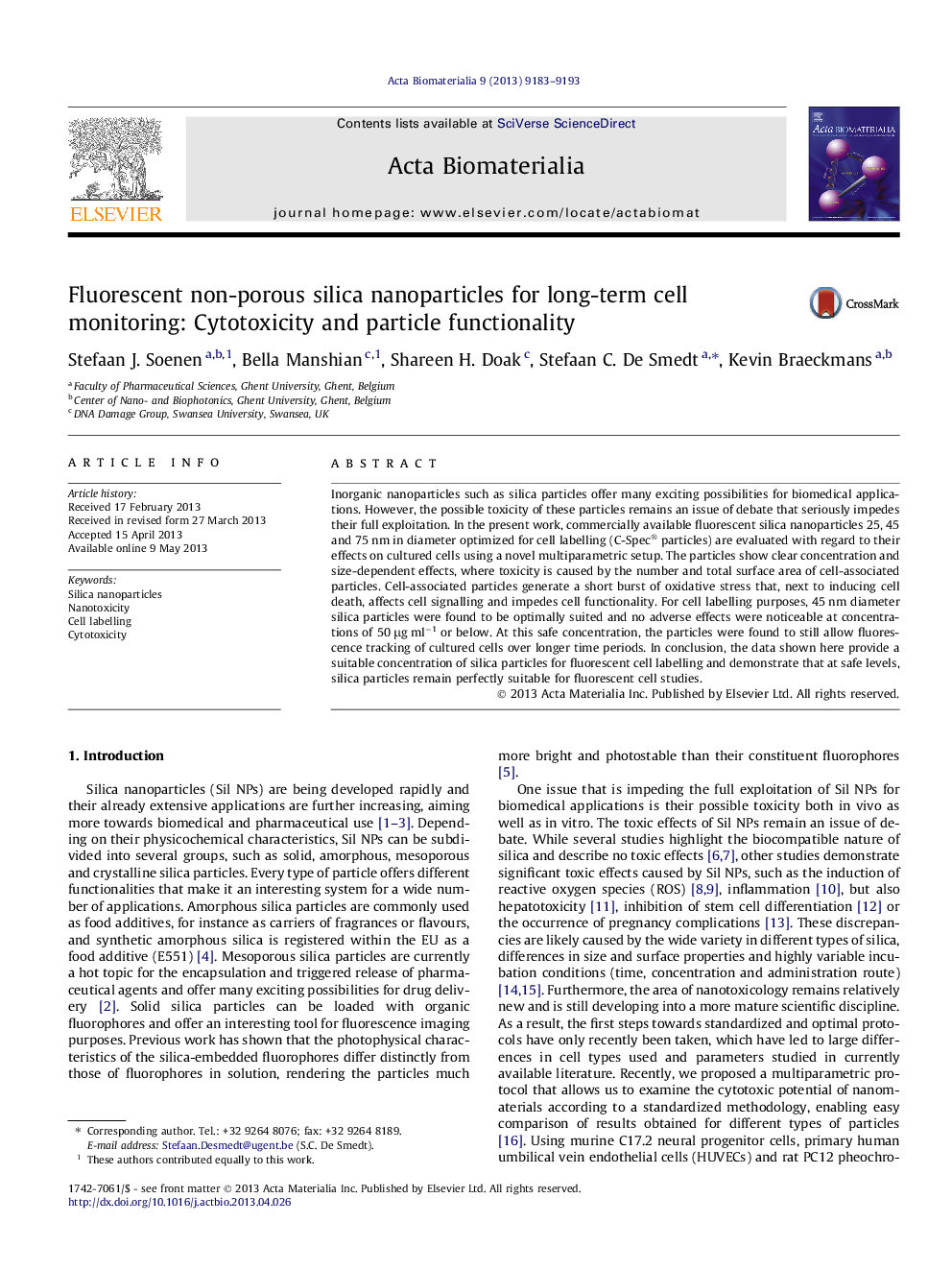| Article ID | Journal | Published Year | Pages | File Type |
|---|---|---|---|---|
| 10159512 | Acta Biomaterialia | 2013 | 11 Pages |
Abstract
Inorganic nanoparticles such as silica particles offer many exciting possibilities for biomedical applications. However, the possible toxicity of these particles remains an issue of debate that seriously impedes their full exploitation. In the present work, commercially available fluorescent silica nanoparticles 25, 45 and 75 nm in diameter optimized for cell labelling (C-Spec® particles) are evaluated with regard to their effects on cultured cells using a novel multiparametric setup. The particles show clear concentration and size-dependent effects, where toxicity is caused by the number and total surface area of cell-associated particles. Cell-associated particles generate a short burst of oxidative stress that, next to inducing cell death, affects cell signalling and impedes cell functionality. For cell labelling purposes, 45 nm diameter silica particles were found to be optimally suited and no adverse effects were noticeable at concentrations of 50 μg mlâ1 or below. At this safe concentration, the particles were found to still allow fluorescence tracking of cultured cells over longer time periods. In conclusion, the data shown here provide a suitable concentration of silica particles for fluorescent cell labelling and demonstrate that at safe levels, silica particles remain perfectly suitable for fluorescent cell studies.
Related Topics
Physical Sciences and Engineering
Chemical Engineering
Bioengineering
Authors
Stefaan J. Soenen, Bella Manshian, Shareen H. Doak, Stefaan C. De Smedt, Kevin Braeckmans,
